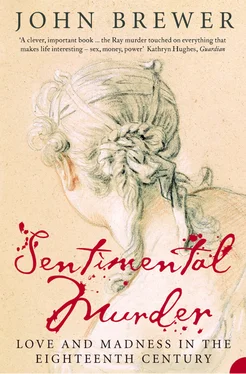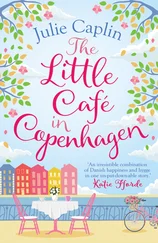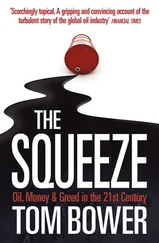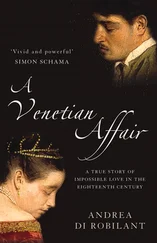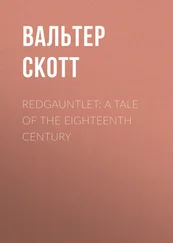1 ...8 9 10 12 13 14 ...19 The Gazetteer then shifted from speculation to titillating gossip. ‘Besides many other 68 cogent reasons, which it may not be proper to disclose, the talkative part of mankind say, that a certain noble lord had his doubts of the true motives that actuated the perpetrator in this extraordinary transaction.’ Perhaps, the paper surmised, Martha Ray had had enough of Sandwich and really wanted to leave him. The rumour was ‘That Miss Ray was satiated with the vicious enjoyment of splendour, and desirous to enter the Temple of Hymen with a man who had given every proof of affection; but that there was some barrier started to prevent the union, and she absolutely refused to marry him, though in the hour of reciprocal tenderness she had promised 69 ’. Even if this were untrue, the paper concluded, Sandwich had gone to great lengths to find out Hackman’s motives: ‘it is certain 70 , that the Noble Lord himself, or one of his friends, questioned Mr Hackman in prison when the solemnity of the sentence was fresh on his mind, as to the inducement for committing the crime’. Yet much remained obscure. ‘In short’, the article ended, ‘there is so much to be said on both sides of the question that arises on a review of the circumstances, that it might seem premature, as it is certainly difficult to form an opinion 71 .’
Such difficulties certainly did not inhibit the press from reporting details of the murder, the interrogation, trial and execution of Hackman, or from speculating about the love triangle. As early as the following day the St James’s Chronicle sketched in the background to the affair:
Upon Enquiry into 72 the Cause of this desperate Action, we learn that it was occasioned by an unhappy Passion which the Prisoner had entertained for the Deceased. This Gentleman, whose name is Hackman, was formerly an Officer in the Army, and being upon a Recruiting Party at Huntingdon, in the summer of 1775, saw Miss Ray first at H————ke, to which he had been invited by his Lordship. After that he saw her several Times both in Town and Country, in one of which Visits, it is said, he proposed Marriage to her, which she very genteelly declined; and to prevent any disagreeable Consequences, never after admitted him to her Presence. This, it is supposed, driving him to Distraction, induced him to commit the bloody Act above-mentioned, which he meant also to have been fatal to himself.
Over the following weeks more and more detail was published about Hackman and his victim.
We can be sure that most of the items appearing in the press were planted either by Sandwich and his supporters or by the friends of James Hackman, notably his brother-in-law and the young lawyer Manasseh Dawes who took it upon himself to be the chief apologist in the press for the murderer. Many readers were aware that what they were reading was parti pris ; indeed, the Gazetteer recognized this when it wrote of ‘both sides of the question 73 ’. The difficulty for readers was how to interpret the different accounts.
The Gazetteer had been right about the questioning of Hackman: Walsingham, acting on Sandwich’s behalf, had spoken at length with him the day after the crime. But the fragments that survive make the two men’s conversation appear more like an attempt to agree on a story than an effort to investigate the truth of the matter. Both sides seem to have been seeking common ground, searching for a version of events they could agree upon. Their first concern was to establish Martha Ray’s innocence. Hackman, wrote Walsingham, ‘is desirous to dye by the hand of the law and says he is happy to know that Miss Ray was innocent … Her innocence being cleared up and your forgiveness as a Christian is all he wishes for.’ But Hackman and Sandwich differed over what Ray’s innocence consisted of. For Hackman it was that she had not taken a new lover, as he claimed Caterina Galli had told him; for Sandwich it was that she had not been carrying on an illicit affair with Hackman. Thus the Earl was relieved to report to his lawyer that ‘Mr H has since declared to Captain Walsingham upon the word of a dying man, that he has never spoken to Miss Ray since the beginning of the year 1776, at which time he had proposed marriage and was rejected’ and he told at least one newspaper, the General Advertiser , that he was sure that Hackman and Ray had not been with one another since their earlier meetings at Hinchingbrooke. Quite apart from their undoubted affection for Martha Ray, both men had strong reasons to assert her innocence. It meant that Hackman could place the blame for his actions on Galli – ‘he lays the whole on Galli 74 ’ – and it stood to prevent Sandwich being ridiculed as an old roué cuckolded by a younger man.
With the help of Sandwich and Hackman’s friends, the papers gradually sketched in a story about the three protagonists, with both plot and characters. They told a tale of two attractive young people – a dashing young army officer and an aristocrat’s mistress of great accomplishment – who meet by chance. The mistress has a keeper who is almost twice her age and with whom she has had five children. The young man falls in love, asks for the mistress’s hand in marriage, but is forced to leave his loved one and join his regiment in Ireland. Eager to return to the object of his affections, he leaves the army, takes holy orders, and asks Ray once again for her hand in marriage. Rejected by her, he is driven first to plan suicide and then to commit murder.
This story opened with richly detailed (though sometimes contradictory) accounts of Hackman and Ray’s first meeting. Several papers portrayed the two on romantic rides in the Huntingdonshire countryside: ‘It was Miss Ray’s custom, at that time, for the benefit of air and exercise, to ride out on horseback behind her servant. Undeniable it is, that Mr Hackman took frequent opportunities of riding out at the same time; and being a good horseman, and dexterous at a leap, was sure to afford no small diversion to the lady 75 .’ Others spoke of Hackman as ‘being of a facetious, agreeable turn of conversation’ which secured him a place at Sandwich’s table and a place close to Martha Ray. Joseph Cradock later 76 recalled the first time that Hackman appeared at Hinchingbrooke, when he was asked to dinner and ended the evening unpacking a telescope, newly arrived from London, to look at the stars.
Sandwich’s house parties in Huntingdonshire were jolly and roistering, attended by musicians and naval explorers, Admiralty officials and minor literati, as well as other aristocrats and rakes. John Cooke, Sandwich’s chaplain, recalled that
The earl of Sandwich was one of the few noblemen, who spend a considerable portion of their time at their country-seats; where he usually resided whenever he could gain a vacation from the duties of his office, and attendance on parliament. His house was at all times open for the reception of his friends and neighbours; and distinguished for the generous, truly hospitable, and liberal entertainment which it afforded 77 .
Another of Sandwich’s friends put it more pithily: ‘Few houses were more pleasant or instructive than his lordship’s: it was filled with rank, beauty and talent, and every one was at ease 78 .’ Charles Burney 79 , the music scholar and father of the novelist Frances Burney, found the parties so boisterous that they gave him a headache. There must have been many witnesses who noticed the handsome young man who paid Martha Ray such attention. The beginnings of Hackman and Ray’s relationship were neither unknown nor obscure, for it had not been difficult for paragraph writers frequenting the fashionable coffee-houses of St James’s to pick up details from former guests at Sandwich’s country house.
Thereafter the story became more shadowy and suppositious. Attempts to find out what had occurred between Hackman’s departure from Hinchingbrooke and his presence on the steps of the Covent Garden Theatre four years later were met with silence and prevarication. ‘The lady’s [Ray’s] friends do not know that there has been any intercourse whatever since 80 ’, reported the opposition General Evening Post . Lord Sandwich, as we have seen, took a similar line. The papers all agreed that Hackman had gone to Ireland, had exchanged his red coat for a clerical habit, and returned to London in the hope of persuading Ray to marry him. Many papers believed that Hackman’s clerical preferment to the living of Wiveton in Norfolk was obtained with the help of Sandwich, probably because of Ray’s solicitation for her friend. All of the press suggested a sudden change in Ray’s attitude towards Hackman, whom she pointedly refused to see.
Читать дальше
